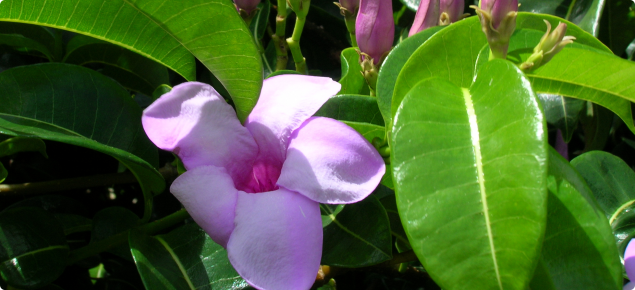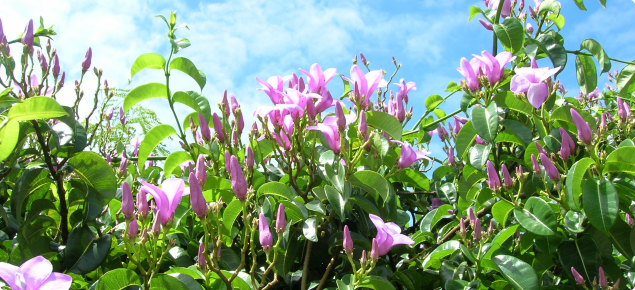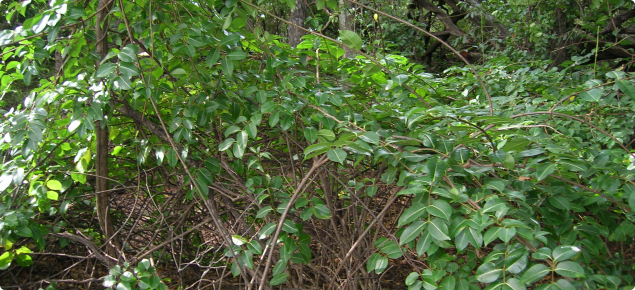Information about this pest can be found on the Madagascar rubber vine: declared pest page.
Chemical requirements
When using any agricultural chemicals please ensure that you always follow instructions on the label and any permit. Users of agricultural chemical products must always strictly comply with the directions on the label and the conditions of any permit. To view permits or product labels go to the Australian Pesticides and Veterinary Medicines Authority website.
Control options
Chemical control options can be found below. For other methods of control please refer to the declared plant control handbook.
Chemical control options
Recommended herbicides | Autumn - during active growth
Freshly cut stump
|
| Herbicide: Triclopyr + picloram (Group I) (various trade names: see APVMA link) | |
| Active ingredient | 300g/L triclopyr + 100g/L picloram |
| Amount of product/10L water | 35mL |
| Wetting agent dilution | 1:400 |
| Time of application | Autumn - during active growth |
| Remarks | Foliar spray - may damage legumes |
| Herbicide: Dicamba (Group I) (various trade names: see APVMA link) | |
| Active ingredient |
|
| Rates of dilution for spot spraying |
|
| Amount of product/10L water |
|
| Wetting agent dilution | 1:400 |
| Time of application | Autumn - during active growth. |
| Remarks |
|
| Herbicide: Metsulfuron (Group B) (various trade names: see APVMA link) | |
| Active ingredient | 600g/kg metsulfuron methyl |
| Rates of dilution for spot spraying | 15g/100L |
| Amount of product/10L water | 1.5g |
| Wetting agent dilution | 1:500 |
| Time of application | Autumn - during active growth |
| Remarks |
|
| Herbicide: Picloram + 2,4-D amine (Group I) | |
| Active ingredient | 75g/L picloram + 300g/L of 2,4-D amine |
| Amount of product/10L water | 130mL |
| Wetting agent dilution | 1:400 |
| Time of application | Autumn - during active growth |
| Remarks |
|
| Herbicide: Triclopyr (Group I) (various trade names: see APVMA link) | |
| Active ingredient | 600g/L triclopyr |
| Amount of product/10L distillate | 160mL |
| Time of application | When actively growing |
| Remarks |
|
| Herbicide: 2,4-D amine (Group I) (various trade names: see APVMA link) | |
| Active ingredient | a) 500g/L 2,4-D amine b) 625g/L 2,4-D amine |
| Rates of dilution for spot spraying | a) 1:50 for 500g/L formulation |
| Amount of product/10L water | a) 200mL for 500g/L formulation |
| Time of application | When actively growing |
| Remarks | Apply to foliage as a high volume spray. Add wetting agent at 1:400 dilution. |



